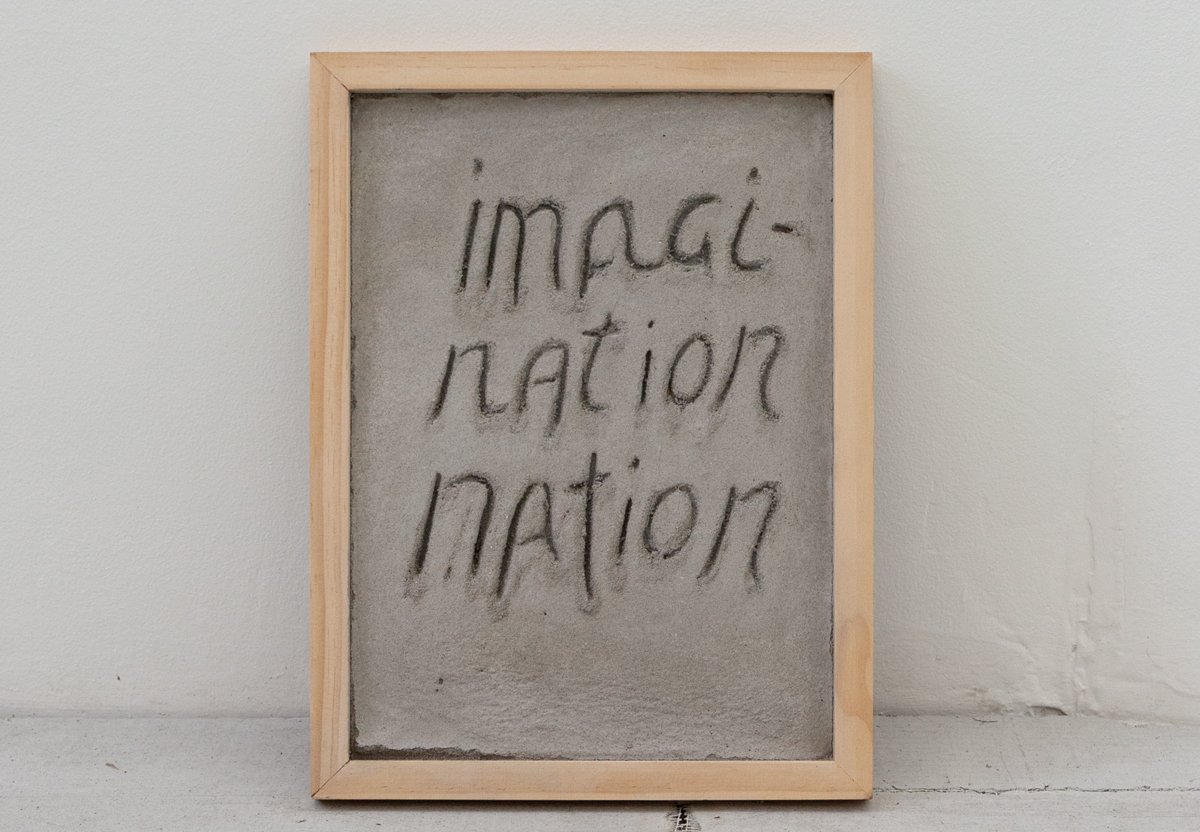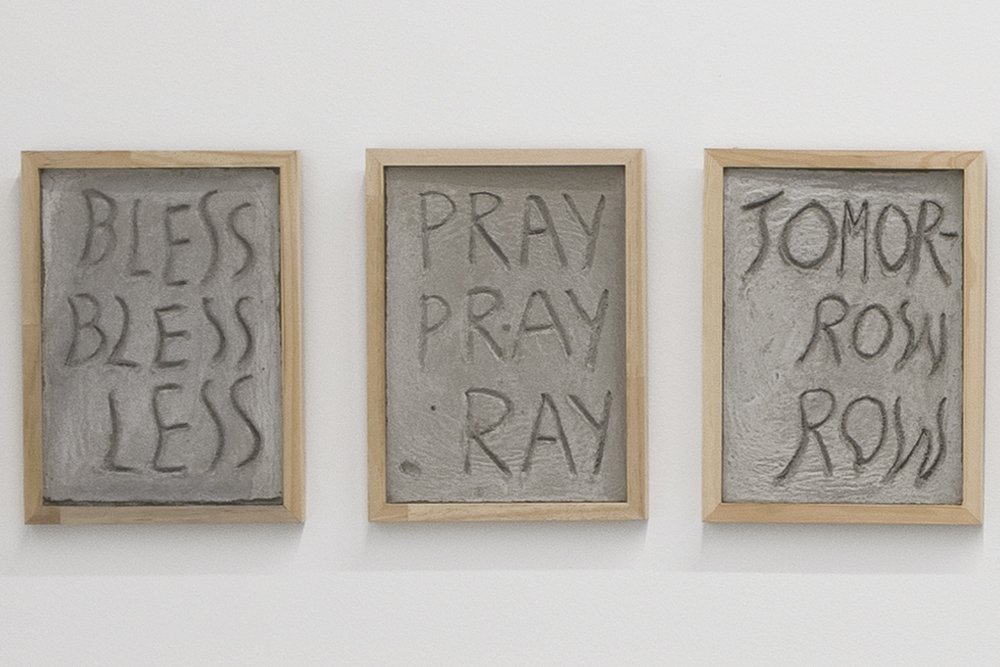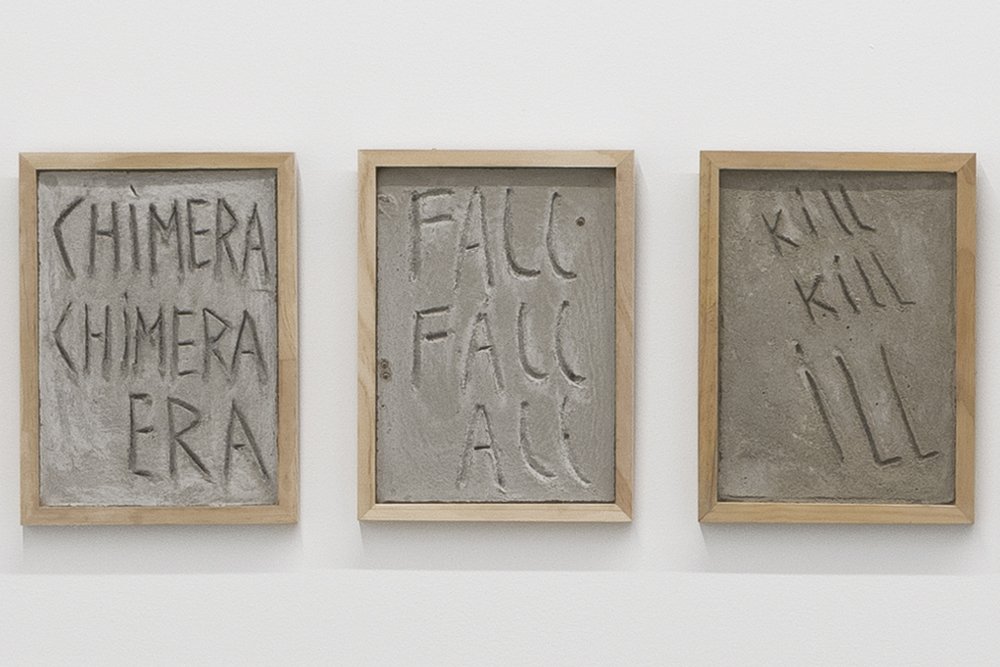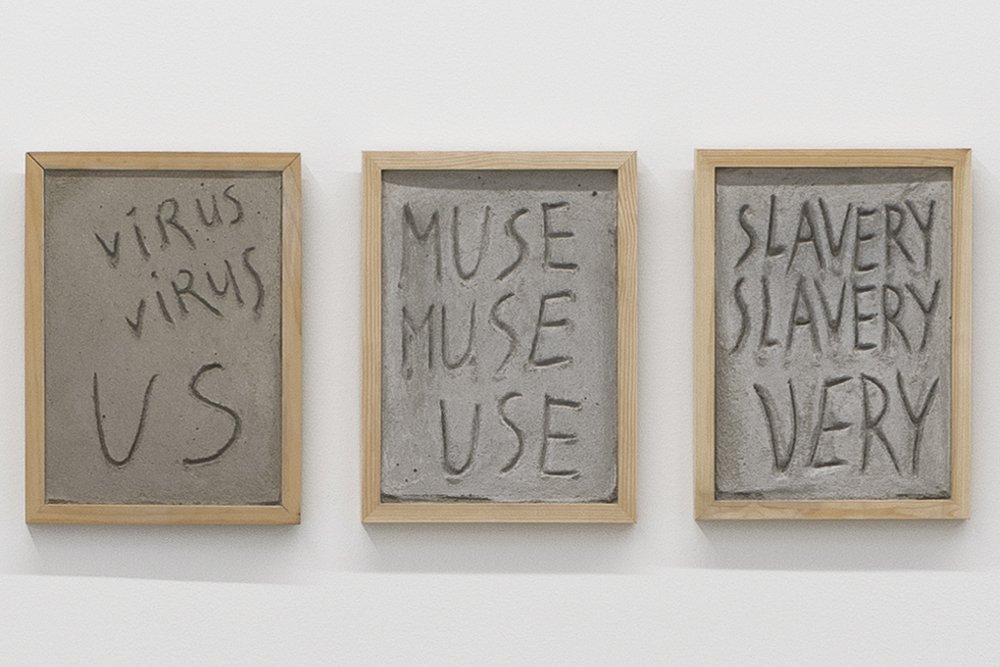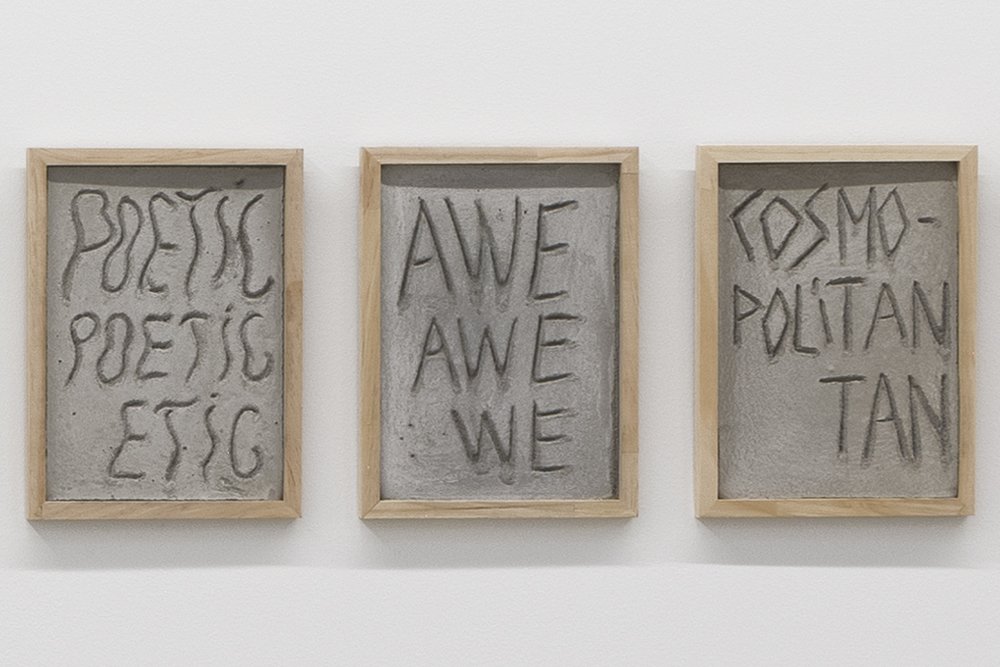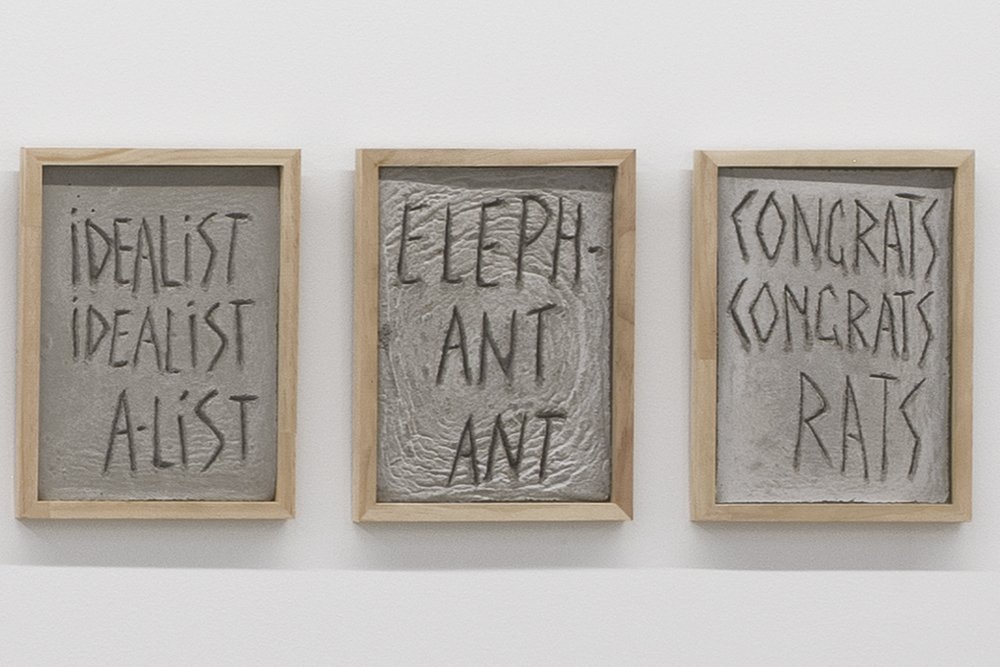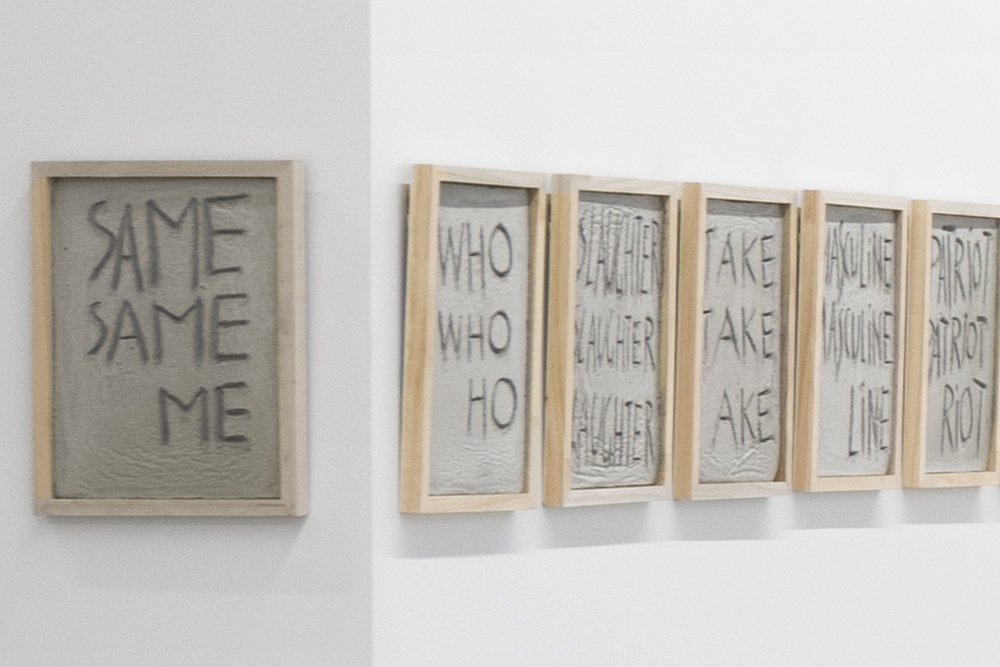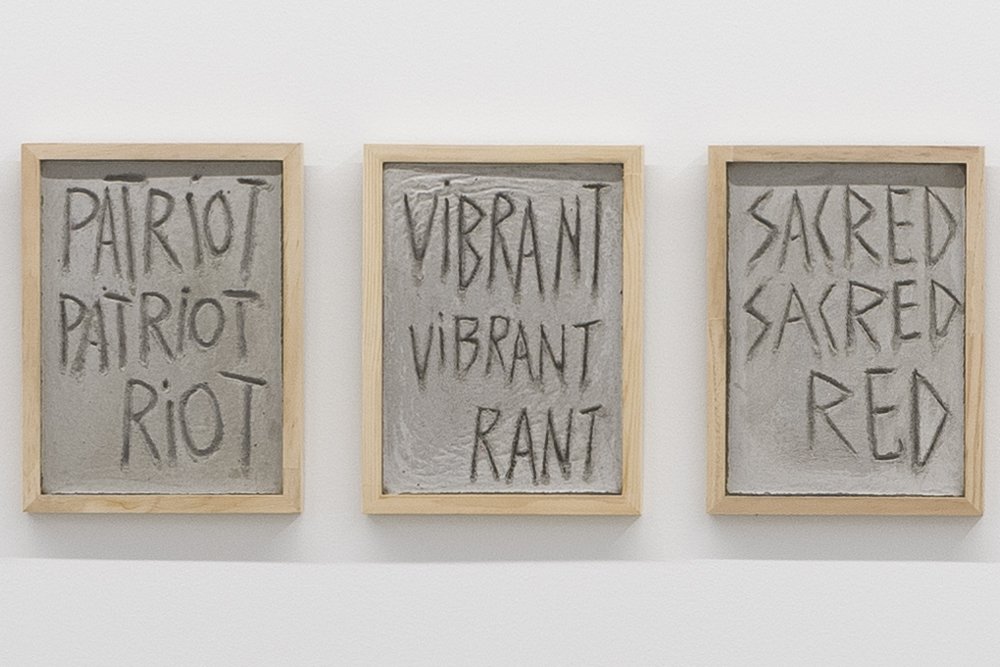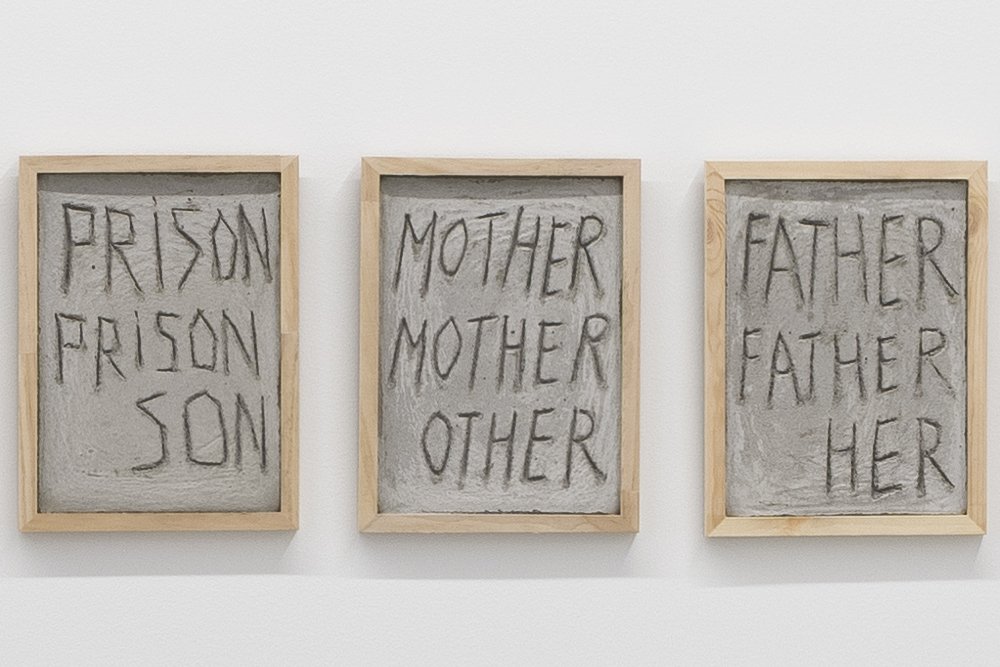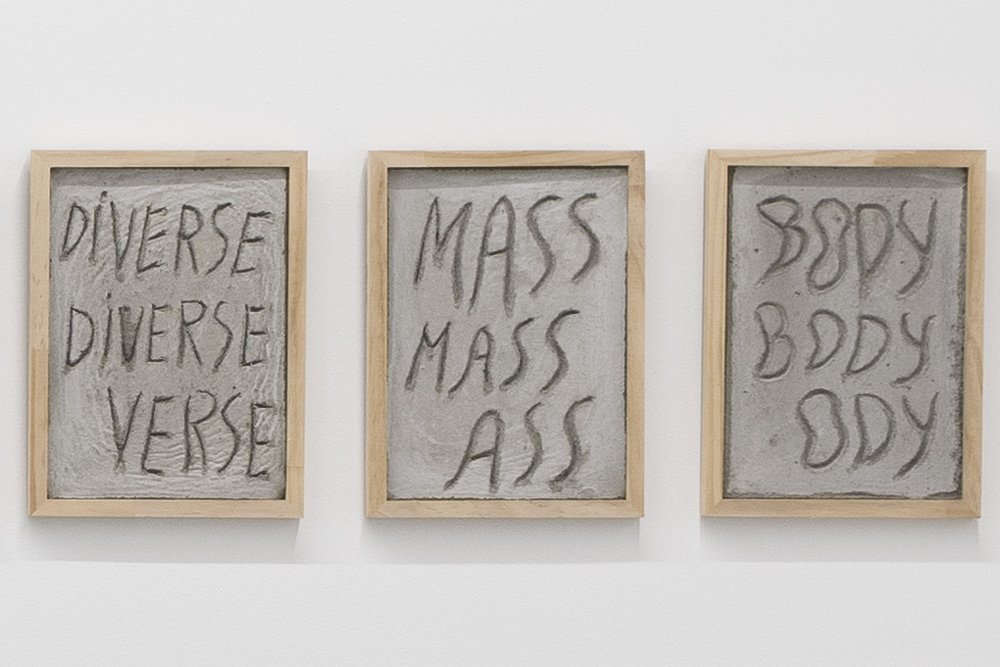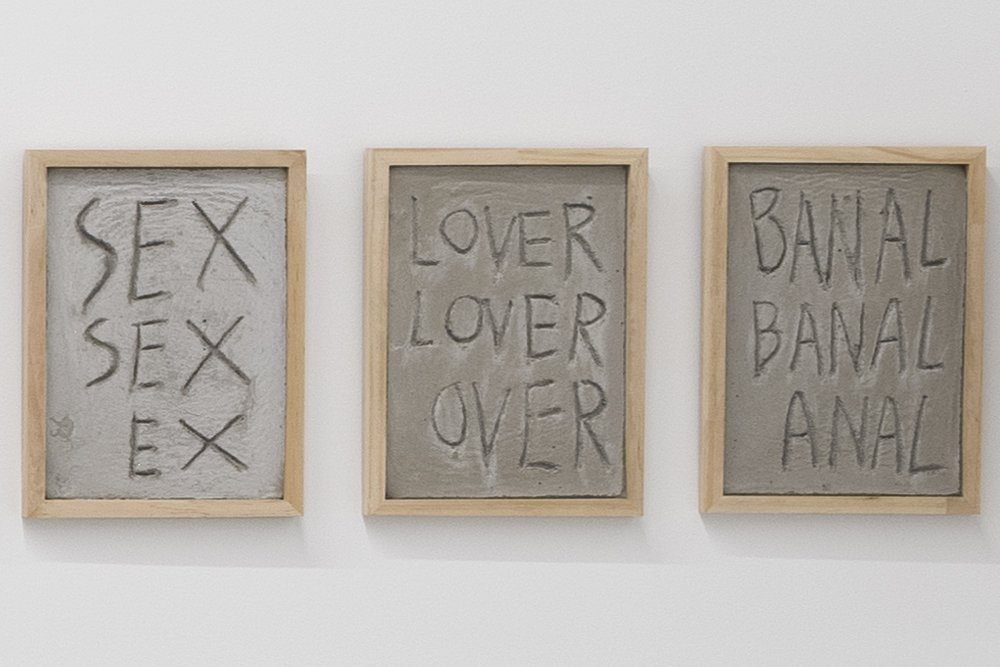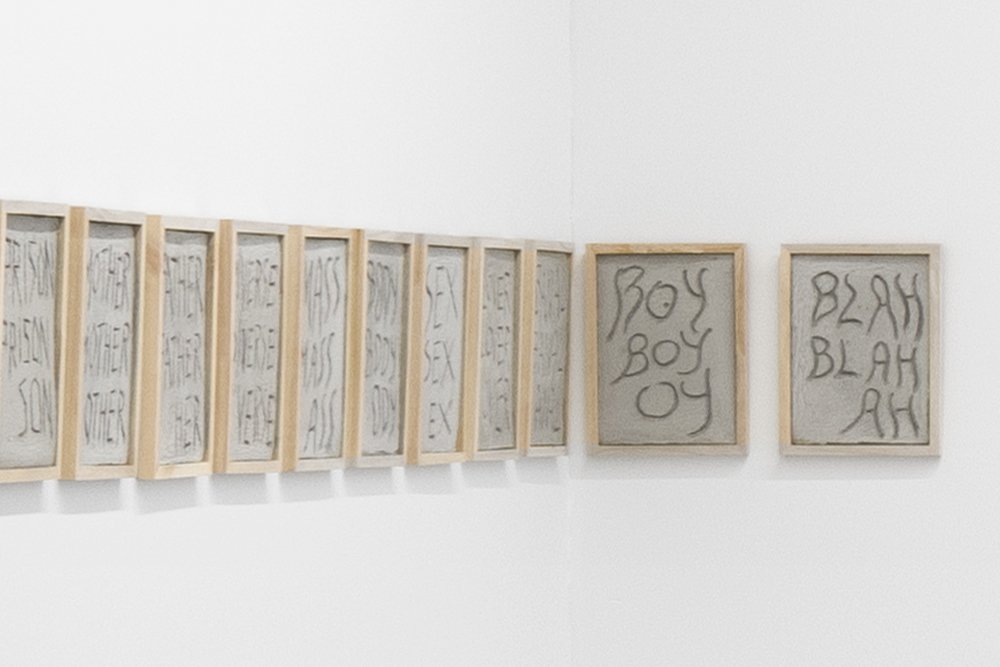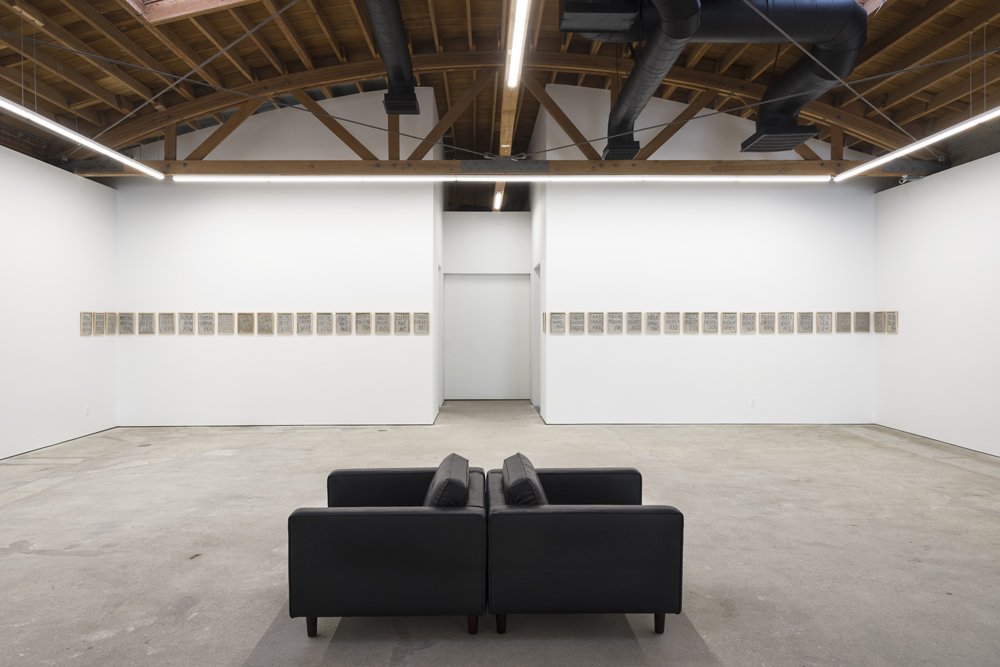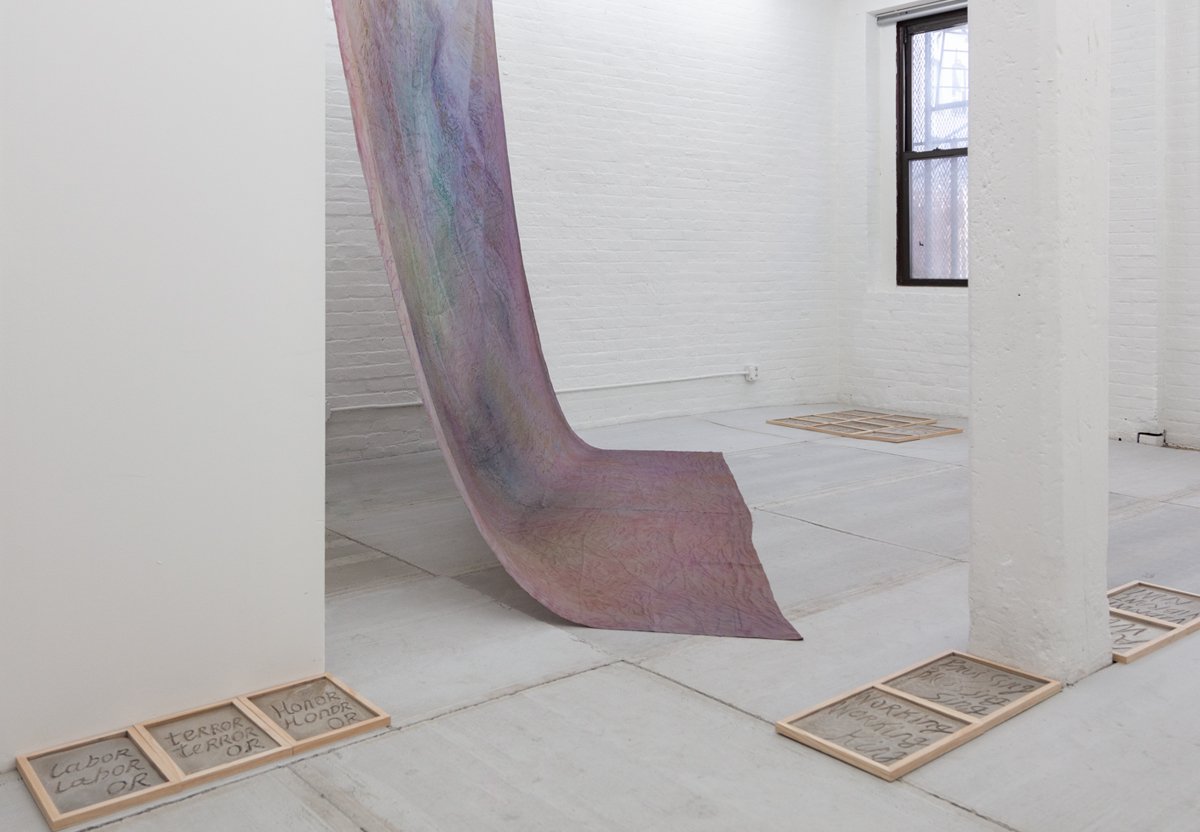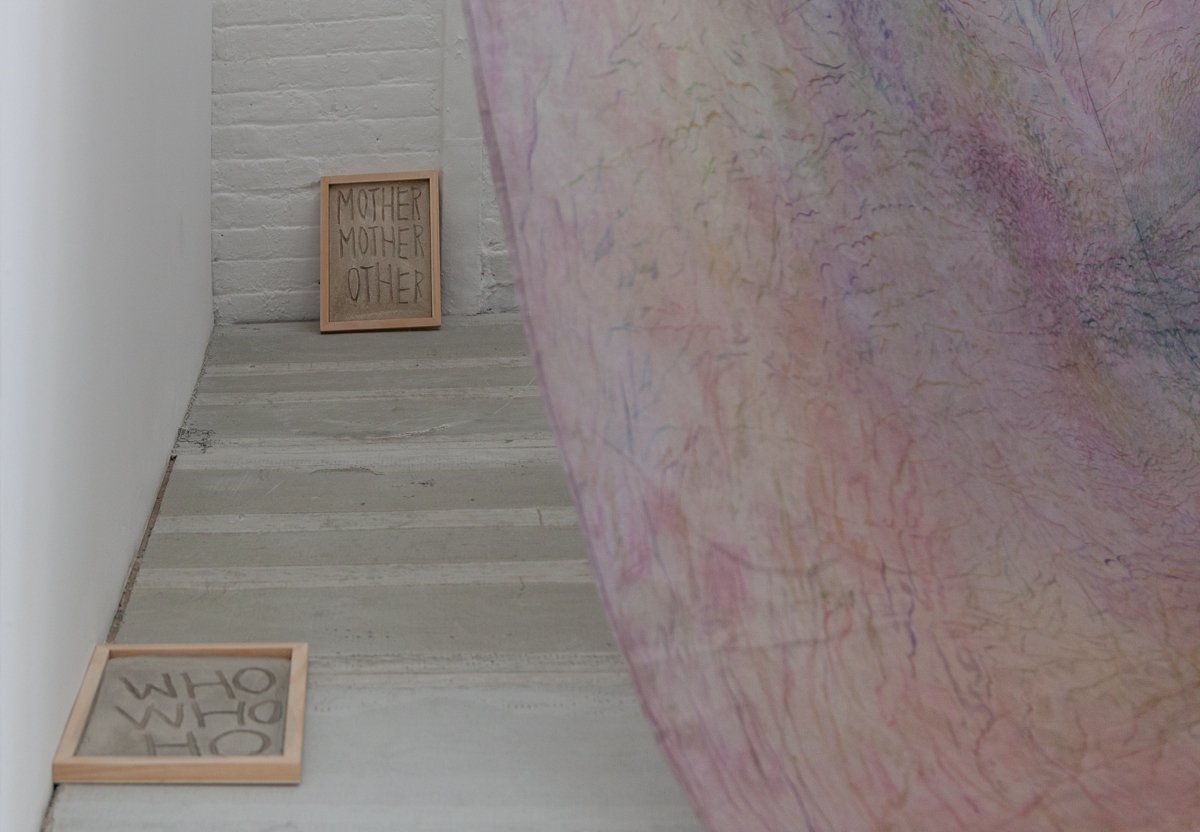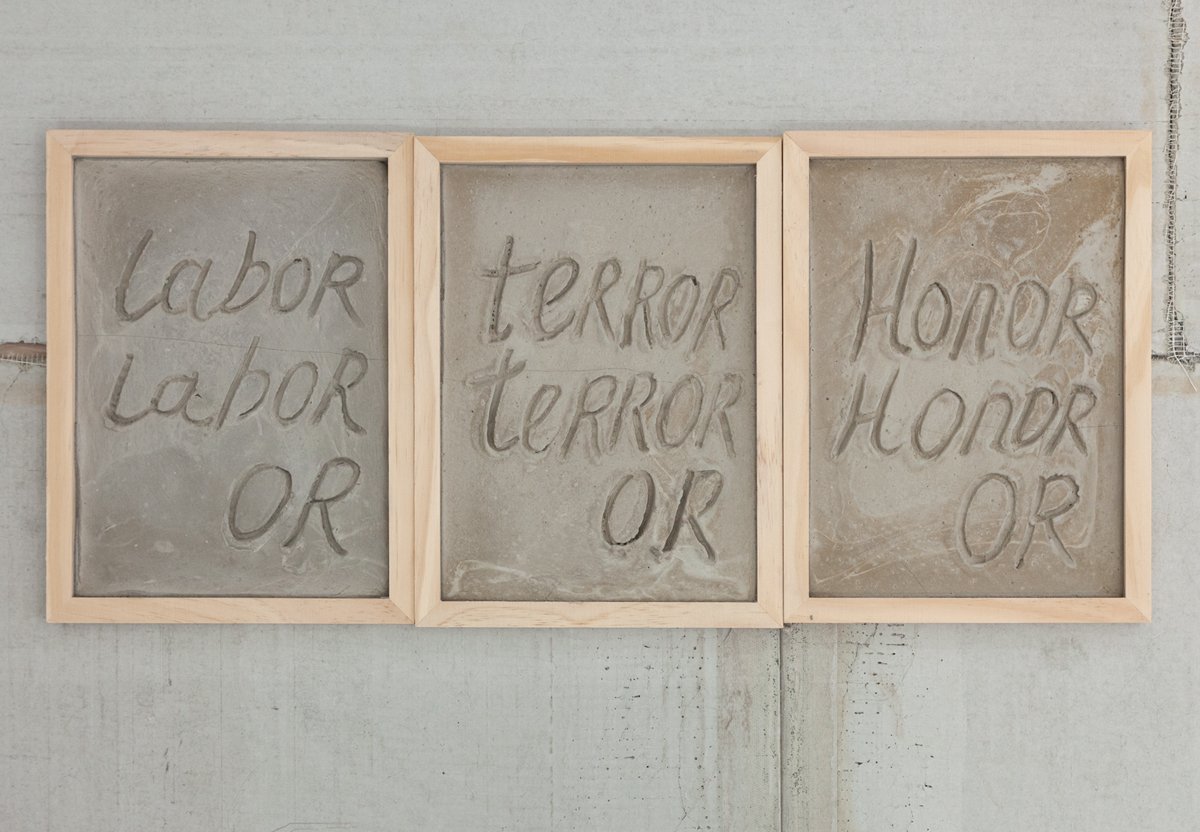CONCRETE POEMS
2021-ongoing, concrete, wood, 12 x 9 inches each
… And in the series “Concrete Poems” familiar words that seem to be merely vehicles of ordinary communication begin to dissolve, revealing an abyss of the absurd hidden behind their grammatically correct surface.
Theodor Adorno famously said that to write poetry after Auschwitz is impossible. The appearance of the beautiful would only serve as cover making us forget the cruel reality of our world. Many artists reacted to this challenge by making their artworks look as ugly as reality itself. However, in this way they missed the cruelty of the second degree – the cruelty of the aestheticizing cover-up. It is this cruelty of the second degree – the cruelty inherent to the artistic practice itself – that Alina makes her topic in a subtle and at the same time surprisingly direct and convincing way.
Boris Groys, ART HISTORY OF VIOLENCE

